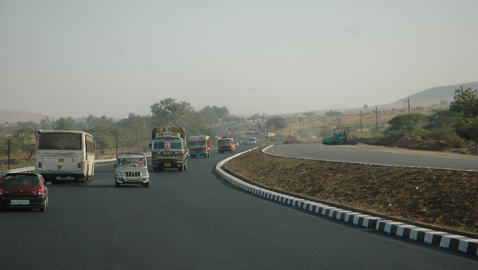
India’s Ministry of Road Transport and Highways has decided to move towards making rigid pavement the default mode of construction on national highways. The decision, taken after considering factors related to service life, fuel consumption, weather conditions, maintenance costs and natural resources, primarily aims to promote environment friendly construction practices in execution of road projects.
The pavement is crucial part of any road project and needs to withstand traffic load without deteriorating or deforming to the extent that it becomes unusable during the design life period.
There are two basic types of pavements – flexible and rigid.
A flexible pavement consists of various layers of granular materials and is provided with a layer of bituminous materials on top. A rigid pavement, on the other hand, consists of a cement concrete pavement laid on a well prepared granular sub-base.
Till now, flexible pavement has been preferred over rigid pavement due to the low initial costs. However, with increasing availability of cement in the country coupled with the rising prices of bitumen, the government’s decision to opt for rigid pavement is being perceived as a prudent one.
The initial cost of rigid pavement is no doubt higher than that of flexible pavement. In terms of lifecycle costing, however, rigid pavement has proved to be more economical than flexible pavement. Experts point out that while selecting the type of pavement, lifecycle cost and not the initial cost should be taken into consideration. The lifecycle cost analysis takes into account the initial investment cost as well as the maintenance and rehabilitation cost over the design life of the pavement structure.
The initial cost of rigid pavement can be brought down to some extent with fly ash mixed concrete. In such case, the lifecycle cost reduces further.
Rigid pavement is generally preferred for locations experiencing heavy rainfall, waterlogged areas and areas having sub-grade soil with low CBR (California Bearing Ratio) values.
In a bid to facilitate uninterrupted supply of cement for national highway projects and other centrally sponsored schemes, the Ministry of Road Transport and Highways has already acquired ex-factory rates from several cement manufacturers for certain grades of cement that conform to its specifications as well as those laid down by the Bureau of Indian Standards. The rates quoted by the cement manufacturers are valid for a period of 12 months.











